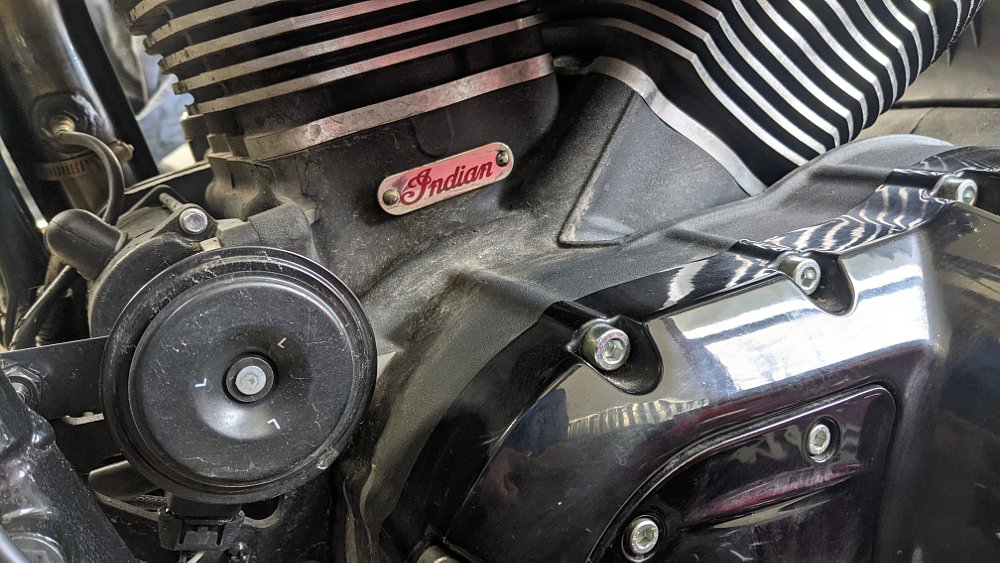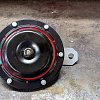When I was growing up, it was always a big day when a new project motorcycle rolled into the shop. We’d put a battery in the bike right away and try the horn. “If the horn works, the bike works,” according to my family's informal rule.
Why did we believe this? Of course a motorcycle doesn’t need its horn to run, although the “rule” proved true more often than not. The horn was a proxy indicator for overall mechanical condition, because it takes a lot to kill a good horn. Same goes for bikes. See where this is going?
If a motorcycle was maintained and stored out of the elements by its previous owners, the horn always gave a beep of encouragement, and the rest of the restoration would go well. But if the bike had been left outside, neglected, or flogged within an inch of its life, only to end up in our hands for a suspiciously low price, beeplessness meant sleepless nights ahead. YMMV.
I won’t wade into the “loud pipes save lives” conversation today, but make sure your motorcycle’s horn works so that you can signal other road users as quickly as possible. Horns can definitely save lives if used (and heard) properly. They’re ideal for non-emergency signaling, too, so let’s take a look at how they work, why they stop working, and how to fix or improve them.
How motorcycle horns work
The earliest motorcycle horns were just repurposed bicycle horns, squeeze bulb and all. Look at your motorcycle’s horn button icon, and it may be a tiny bugle. Klaxon-style (awoooga!) horns came later, in both hand-powered and electric versions. At the Klaxon’s core is a spring steel diaphragm that vibrates to produce a startling sound. (The Klaxon brand name comes from Greek roots, and roughly translates to “I shriek!”) You’ll find similar diaphragms inside today’s motorcycle horns, more than a hundred years later.

The cheapest, smallest, and most common option today are round diaphragm horns. They’re found on everything from scooters to heavy tourers, usually somewhere near the front of the bike. Inside these horns, you’ll see a steel diaphragm over a small electromagnet. Pressing the horn button on the handlebar activates the electromagnet, which pulls on the diaphragm until a set of contact points touch, breaking the electromagnet’s pull on the steel and returning the diaphragm to its original process to start the cycle again. The diaphragm goes on vibrating between those two positions to produce a steady tone. Simple, effective, and very compact. If you’ve ever serviced a fuel pump, you’ve probably seen the same electromagnet/points/diaphragm concept at work.

A variation of the basic diaphragm horn has a curled trumpet over the diaphragm. These are sometimes called snail horns. This arrangement typically costs a little more, but the trumpet helps to direct and project the sound. They aren’t as tinny as the basic horns to my ears. As a rule of thumb, the trumpet opening should face down when installed so it doesn’t collect water.

The biggest, baddest motorcycle horns are airhorns powered by miniature compressors. They’re bulky, but you won’t appreciate their blast until you’ve ridden with someone who has one. FWAAA! Get an airhorn if you’re tired of drivers ignoring your feeble stock horn. Some manufacturers combine the compressor and horn into a single unit, while others split the two components for more flexibility with your mounting location. Note: Air horns almost always need a relay for their increased amperage requirements.
Two horns are better than one
Most cars have a twin horn setup, while many motorcycles just have one, which is the main reason why motorcycle beeps sound toy-like or weak compared to other traffic. You’ll find two horns on some motorcycles, though, usually tourers and cruisers. A two-tone beep is supposedly easier to hear over ambient road noise, and manufacturers intentionally choose horns that complement each other for a louder, more premium sound.
It’s possible to add a second horn to your motorcycle if you’d like. Be sure to use a relay to protect your stock wiring if you choose this route, as the amperage involved can exceed the limitations of your stock wiring harness. Complete dual horn kits are also available for some models. Alternatively, you could upgrade your existing horn with an aftermarket replacement from Denali, Wolo, or Stebel, to name a few popular brands.

Troubleshooting your motorcycle horn
Inoperative horns are easy to troubleshoot. Start with the horn fuse if your bike has one. Blown fuses often indicate faulty wiring, so take a good look around for damaged insulation, frayed connections, and other basic signs of electrical trouble. Then, test the horn itself. Remove the horn and try hooking it up to a fully charged battery or benchtop power supply. Try to keep track of polarity while testing, but if you get your leads mixed up, it probably won’t fry your horn. Still no beep? Skip down to the repair section below.
If the horn tests OK off the bike but wasn't working when it was on the bike, your problem is probably a wiring issue, a dead horn relay (if equipped), or a faulty button (assuming you've already checked the fuse). Grab your multimeter, or build a simple test light, to down the problem. Find a wiring diagram and take your time.
How to adjust and repair motorcycle horns
Most folks simply toss their broken horns and buy new ones. Nothing wrong with that, especially for the money. A generic replacement costs around $10 to $15; pony up $20 to $50 for an upgraded model with a louder blast. So why bother adjusting or repairing?
- Sometimes a small adjustment is all that’s needed.
- Replacements might be hard to find for vintage/antique models.
- Taking stuff apart to learn how it works is fun.

Adjusting a motorcycle horn couldn’t be easier. Find the adjustment bolt (or nut), usually on the back of the horn or in the center of the diaphragm. This adjusts the distance between the contact points inside, which can be disrupted by dirt, corrosion, or wear over time. Hook the horn up to your battery and adjust the gap until it beeps normally.
If the horn still doesn’t work, it’s time for disassembly. Look for screws, rivets, or a folded steel ring around the outer edge, then unscrew, drill, or pry the pieces apart. Don’t forget the orientation of each component. And don’t bend the diaphragm! Carefully clean out the innards, and check those contact points for oxidization. Lightly brush the contacts with sandpaper if needed, then reassemble and test.
It’s true, lots of motorcycle horns are positively wimpy from the factory. Don’t let the underwhelming performance discourage you. Now you know the basics of keeping your horn in working condition, or announcing your presence to everyone within earshot with some simple upgrades. Just make sure the horn button does something.















